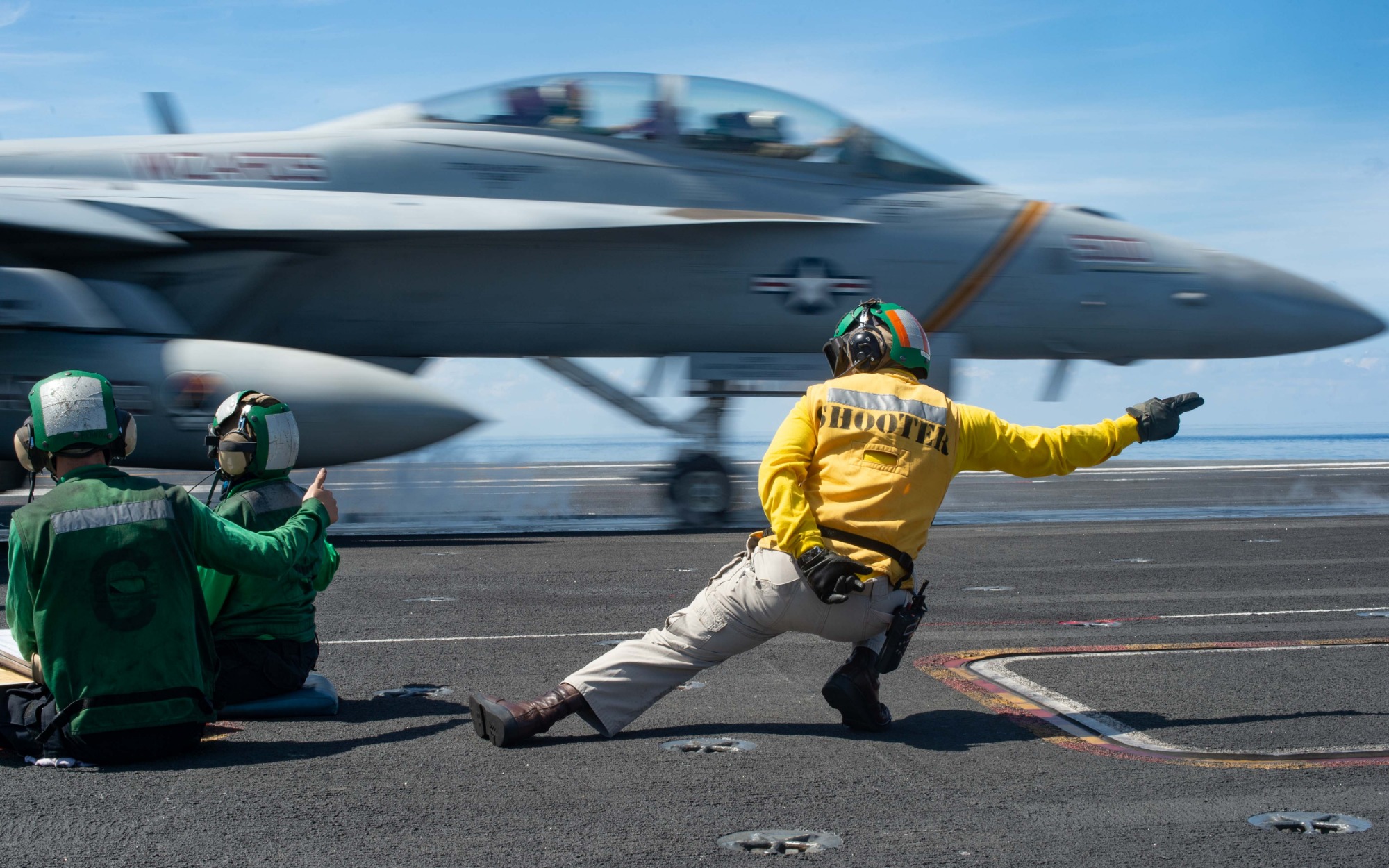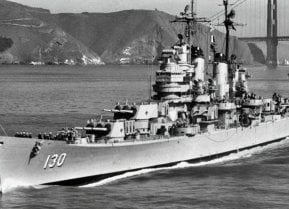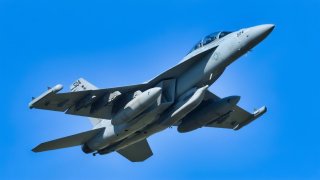The U.S. Navy's EA-18G Growler Is an Electronic Warfare Warrior
The EA-18G Growler version of the F/A-18 was built as a replacement for the Navy’s previous carrier-borne EW aircraft, the EA-6B Prowler, which was retired in 2019 after 48 years of faithful service.
As hordes of moviegoers flock to the box office to view Top Gun: Maverick, the sequel to the 1986 film Top Gun, the F/A-18E Super Hornet has replaced the beloved Grumman F-14 Tomcat as the U.S. Navy’s primary jet fighter and interceptor. As I noted in a recent article on the would-be Super Tomcat version of the F-14, the Super Hornet, while not as super-sexy or awe-inspiring as the Tomcat, fulfills the Navy’s need for a “jack of all trades, master of none;” reliable, efficient, and battle-proven jet. What is not so obvious from the film is that the F/A-18 also has specialized electronic warfare (EW) model: the Boeing EA-18G Growler.
Prowler, Meet EA-18G Growler
The EA-18G Growler version of the F/A-18 was built as a replacement for the Navy’s previous carrier-borne EW aircraft, the EA-6B Prowler, which was retired in 2019 after 48 years of faithful service.
This author has not been able to ascertain whether the folks at Boeing or the Department of the Navy were intentionally trying to employ tongue-in-cheek rhyming wordplay with the moniker of the Prowler’s successor. What is known, however, is that in service, the EA-18’s radio name during flight operations will be “Grizzly,” to avoid confusion. After all, Clausewitz’s infamous “fog of war” must be mitigated to the maximum extent possible, n’est ce-pas?
For its part, the Prowler also got its roots from a combat-proven parent aircraft, the Grumman A-6 Intruder attack aircraft, which proved its worth in missions over Vietnam, Libya, and Iraq alike. Intruders packed a sufficient payload that the North Vietnamese nicknamed “miniature B-52s.”
Even a casual observer will be able to notice the obvious cosmetic difference between the Prowler and the Growler/“Grizzly.” But the differences go above and beyond the sleeker-looking fuselage and pointier nose of the newer warbird.
For starters, the EA-6B was relegated to subsonic speeds, with a top speed of 651 miles per hour (1,048 km/h). While the EA-18G easily breaks the sound barrier with a maximum speed of 1,190 mph (1,900 km/h), or Mach 1.8. In addition, the Growler carries air-to-air defensive armament that neither the Prowler nor the Intruder ever had. Though not intended to tangle with enemy fighters and interceptors — its primary mission is EW after all — the Growler has two AIM-120 AMRAAM (Advanced Medium-Range Air-to-Air Missile) “Slammers” just in case, going by the philosophy of “better to have and not need than vice versa” (as F-105 Thunderchief pilots who got their fair share of air-to-air kills over Vietnam could attest). However, unlike its Hornet progenitor, the “Grizzly” omits the 20mm M61A2 Vulcan cannon.
The Gravitas of the Growler/Grizzly
To fulfill its primary mission of EW, the EA-18G integrates the latest electronic attack technology. This includes the ALQ-218 receiver, ALQ-99 tactical jamming pods, ALQ-227 Communication Countermeasures Set, and Joint Tactical Terminal – Receiver (JTT-R) satellite communications. Along with the electronic attack suite, the Growler also features the APG-79 Active Electronically Scanned Array (AESA) radar.
When the time comes to not merely jam enemy radars but to obliterate them, this angry Mama Bear Grizzly unleashes two AGM-88 HARM missiles, which have served since 1985 as a worthy successor to the Shrike missile used by Intruder and Wild Weasel pilots in the skies over North Vietnam.

The first Growler test aircraft went into production in October 2004 and made her maiden flight in August 2006. The initial operational capability was attained in September 2009, with its first deployment for VAQ-132 in November 2010. The warbird was first “blooded” in combat during Operation Odyssey Dawn over Libya in 2011. Since the first EF-18G rolled off the production lines, a total of 608 have been built.

EA-18G: Specifications/General Characteristics
Unit Cost: $67 million
Propulsion: Two F414-GE-400 turbofan engines. 22,000 pounds (9,977 kg) static thrust per engine
Length: 60.2 feet (18.5 meters)
Height: 16 feet (4.87 meters)
Wingspan: 44.9 feet (13.68 meters)
Weight: Weight empty: 33,094 pounds; Recovery weight: 48,000 pounds
Ceiling: 50,000 feet
Range: Combat: 850+ nautical miles with two AIM-120, three ALQ-99, two AGM-88 HARM, two 480 gallon external fuel tanks
Crew: 2
About the Author
Christian D. Orr is a former Air Force officer, Federal law enforcement officer, and private military contractor (with assignments worked in Iraq, the United Arab Emirates, Kosovo, Japan, Germany, and the Pentagon). Chris holds a B.A. in International Relations from the University of Southern California (USC) and an M.A. in Intelligence Studies (concentration in Terrorism Studies) from American Military University (AMU). He has also been published in The Daily Torch and The Journal of Intelligence and Cyber Security.


